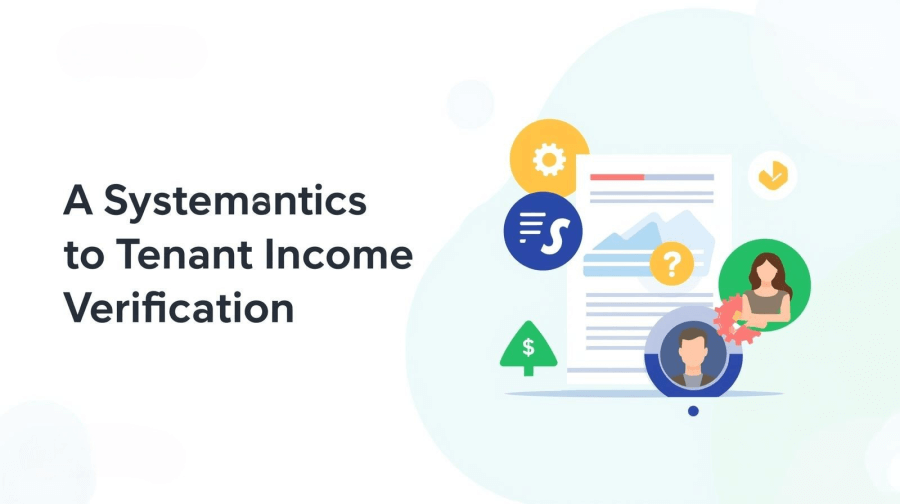When investing in rental properties, one of the biggest risks you can face as an investor is unreliable income from tenants. A tenant may look good on paper, but if their income can’t cover the rent consistently, it quickly turns into missed payments, stress, and potential losses for you as the investor. For this reason, income verification is an essential step in protecting your cash flow and long-term profits, not merely a box to check.

The problem is that a lot of investors either skip steps in the process or rely on quick checks that don’t provide a complete picture. A more systematic approach can guarantee that you are verifying a tenant’s future financial stability in addition to their capacity to make payments. Read along as this post breaks down how you can approach income verification in a structured way.
Why Is it Important to Verify Tenant Income?
When you rent out your property, the last thing you want is doubt about whether your tenant can afford the monthly rent. You can reduce that risk by confirming the income of your tenants. It is similar to inspecting the foundation before constructing a house: you are ensuring stability before proceeding.
When you confirm a tenant’s income, it’s just a way to protect your cash flow. Rent payments that are late or missed can have an immediate impact on your capacity to pay for maintenance, property management fees, and possibly your mortgage. When you look past the financial side, it also saves you from the stress of chasing payments or going through an eviction process, which is costly and time-consuming.
Verifying their income also enables you to find trustworthy renters who can easily meet their obligations. Working with a local rental manager in Texas can help landlords secure a consistent rental income through detailed screening, including verifying tenant income. It reassures you that the new tenant is not only eligible on paper but also has the long-term financial stability to maintain the rental. In short, verifying income gives you peace of mind, reduces risk, and safeguards the return on your investment. Although it’s a straightforward process, it can have a significant impact on your experience as an investor or landlord.
Steps in Verifying Tenant Income
Establish Clear Policies
Clear policies must be established before tenant income verification. In the absence of explicit guidelines, you may find yourself making inconsistent decisions that could lead to issues later. The first step is to determine your minimum income requirement. Many investors use the “3x rent rule,” meaning that your tenant’s monthly income must be at least three times the rent.
Be clear about what documentation you will need, such as current bank statements, tax returns, or pay stubs. In addition to helping you maintain consistency, putting these standards in writing demonstrates to applicants how serious you are about financial stability. Moreover, it prevents misunderstandings and establishes a professional tone right away. Clear policies ensure that everyone is aware of the requirements before proceeding, protecting you, your property, and even the tenant. At the end of the day, it’s about establishing a framework that works for everyone.
Verify All Required Documents
Making sure you gather all the necessary paperwork and that the tenants’ income truly checks out is the first step in confirming their income. You need evidence, not just someone’s word for it. To verify income level and consistency, start by requesting recent pay stubs, often the last two or three. Additionally, bank statements are helpful because they demonstrate whether or not funds are being deposited on a regular basis.
You can get a better idea of the income of self-employed renters by looking at their tax filings or profit-and-loss statements. Do not skip the employment verification process; either a quick call or email to the employer can confirm that the job is real and ongoing. The goal is to have sufficient trustworthy proof that the tenant can pay the rent before you give them the keys, not to overload them with paperwork.
Identify Red Flags from Inconsistencies
Reading between the lines is just as important as gathering documentation when confirming a tenant’s income. Do the sums on the pay stubs match the bank account deposits? Are the employer details the same in every document? These simple checks help you identify potential problems early on.
Most of the time, the red flags show up in the details. Watch out for pay stubs with formatting errors, missing employer contact information, or bank statements that don’t match the claimed income. Frequent job changes without clear explanations can also signal instability. If something feels off, don’t be afraid to ask follow-up questions or request additional proof. By keeping an eye out for irregularities, you may prevent renters who could have trouble making their rent payments and instead choose dependable tenants for your investment.
Long-Term Benefits of a Systemic Approach
Builds a Professional Reputation
Not only does a systematic approach to income verification protect your cash flow, but it also enhances your reputation as an experienced property owner. When you conduct tenant screening with consistency and fairness, you distinguish yourself as someone who takes the business seriously. Tenants notice this, as do property managers and other investors. Over time, it establishes you as a landlord who manages properties with structure and integrity rather than guessing.
Reliable tenants are more likely to stay, resulting in lower turnover. Partners and lenders are more confident in dealing with you since they know you have risk-reduction strategies in place. In short, a systematic strategy is about more than just decreasing problems today; it is also about increasing your credibility and establishing long-term confidence in the rental market.
Financial Stability and Peace of Mind
You can lower the likelihood of missed rent, expensive evictions, or unexpected vacancies by regularly screening renters using a transparent method. This type of consistency increases the financial stability of your investment and provides you with reliable cash flow.
Instead of worrying each month about whether rent will come in, you know your tenants have been vetted for financial responsibility. Over time, this reduces stress, saves you money, and helps you focus on growing your portfolio rather than putting out fires. A structured approach may take a little more effort upfront, but it creates lasting security and confidence in your role as an investor.
Conclusion
At the end of the day, verifying tenant income is about protecting your investment and setting yourself up for long-term success. A systematic approach allows clarity, reduces financial risks, and helps you avoid the stress that comes with unreliable tenants. More importantly, it builds your reputation as a professional investor who takes screening seriously. At the end of the day, when you put in a little extra effort up front, you gain steady cash flow, dependable tenants, and peace of mind. That’s a win worth every step of the process.


